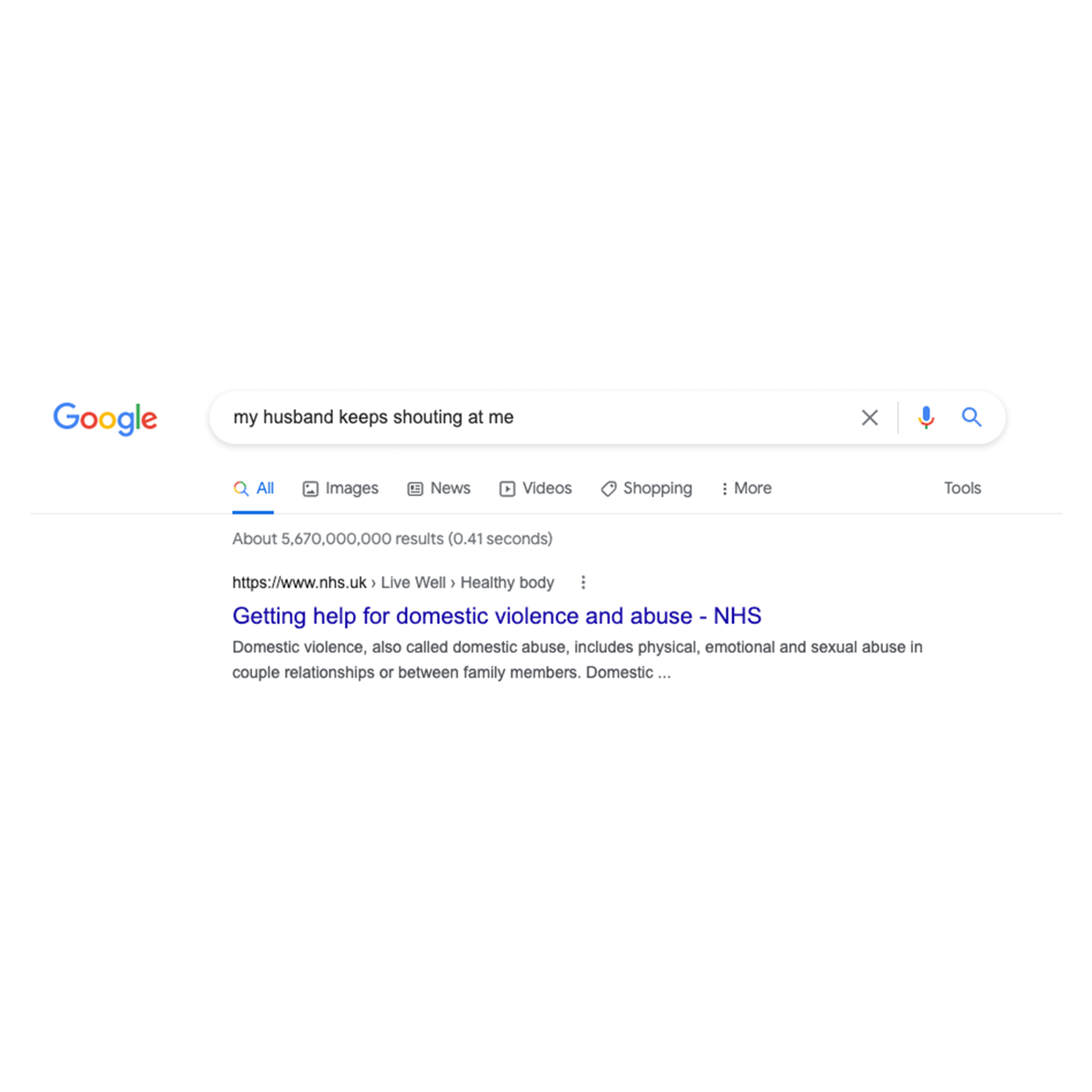5 ways you can do your bit to reduce gender bias across your customer experience
When you grow up in a digital world with the name Sam, you get to experience different perspectives on gender bias – I’ve often been met with a ‘Mr Bettis’ and had quite different experiences to when I get a ‘Ms’… both scenarios can be very frustrating.
Gender bias – favouring one gender over another – can often be completely subconscious. That’s what often makes it so hard for organisations to identify and address their own weaknesses. But take a close look at your customer experience touchpoints and you may well spot biases and stereotypes you’ve never thought about before.
With #BreakTheBias being theme of International Women’s Day 2022, now’s the perfect time to consider the human experiences your customers face.
Looking at your marketing, products, operations and customer service in terms of gender bias is a key step towards levelling the playing field and working toward a gender equal world for your colleagues and customers. These five steps are a good place to start.
1 . INSIGHT – SPEAK TO NEEDS OVER CIRCUMSTANCE
Are you using gendered assumptions in your customer research? Does your segmentation make presuppositions based on gender? A lot of ‘customer persona’ portraits are centred around quite broad and outdated stereotypes. And the problem with these kinds of poor insights is that they can throw you down the wrong path.
Buyer personas should help you create meaningful content by describing who your customer actually is. To do that, what you need are personas that are actually useful. For example, is it useful to assume your customer is a “C-suite John – aged 44-55 and would love our B2B tech to help him make better decisions”. Or, is more useful to assume “our C-level decision maker has 5 key needs from a tech provider?”
We need to consider how we cut out some of this useless, misleading ‘bloat’ in persona documents, not only to remove gender biases but to make the personas more targeted and therefore useful.
How do we do this? By focusing on the needs of the audience. What is their motivation? What are their triggers? And how do their needs shift and evolve throughout the customer experience?
By provide a gateway into understanding how users behave, rather than how they look, a needs-based persona provides the opportunity to think through how products and services can be more inclusive and equitable. It moves you away from the risk of biased gender (and ethnicity, age, and economic status) stereotypes and towards a context-dependent understanding of behaviour.
Grouping users by behaviours guards against our natural instinct to fill in details with assumptions that are based on not based on stereotypical thinking rather than real data.
2 . TARGETING – TARGET WITH BETTER INTENTIONS
Is your media targeting making assumptions based on gender? If so, is there a more data-triggered approach you could use for media targeting? Scenarios where gender should truly dictate who does and does not see an ad are few and far between. On top of this, many platforms currently only allow two binary targeting options which is immediately exclusory.
When you can eliminate binary gender-based targeting you’ll find you get closer to the truth of what your customer is trying to achieve.
That’s not to say gender-based targeting doesn’t have its place – it can be of great value in situations where you’re trying to reach under-represented communities. But it can have serious implications – for example, one recent research study found that Facebook, as a result of gender bias in its algorithms, was disproportionately showing certain job adverts to men, and others to women. The research revealed that, because the algorithm was incorporating data of the existing concentration of gender within a particular role or industry, it was reflecting that gender split back when advertising a role, further solidifying the status quo.
It’s not just a problem with algorithms. Every day, fellow humans are making gender biased assumptions, such as targeting children’s days out to women in the summer holidays. All these targeting decisions add up and it’s important that we work harder to combat our reactive and implicit biases about genders.
3 . CONTENT AND COMMUNICATIONS – DO WE NEED TO THINK ABOUT GENDER IN THE CREATIVE BRIEF?
As the most visible, consumer-facing aspect of a marketing campaign, the look and language used in comms is understandably the area in which most progress has been – but we’re not there yet!
To this day, gender-targeted comms will more often than not fall back on lazy stereotypes when it comes to colour, tone and language. Females get pink, pastels and emotive wording, male get blue backgrounds and more aggressive language. Don’t believe me? Go to your favourite toy website, search ‘gifts for girls’ vs ‘gifts for boys’ and you’ll see exactly what we’re up against!
Across the content and communication journey we need to check moments of automation, triggered comms and static comms and ask ourselves if we’re helping further a biased conversation. Are gendered assumptions being made in your UX, emails, articles, or social posts? And if so, how do you go about addressing unwanted assumptions?
It begins with asking ourselves the right questions at the briefing stage:
- Is there a specific gender-based objective? If not, why is gender in the brief?
- What is our ED&I criteria on casting?
- Are we forcing any bias into the direction we give to the creative team, whether through suggestive personas, language or thought starters?
- Who within the business is accountable for reviewing these decisions?
Awareness is the key. The more you can keep these kinds of questions front of mind, the less likely you are to fall back on gender bias. It’s an ongoing process – one even the most forward-thinking entities need to continuously work on. As evidence, take a look at how much gendered assumptions play into the difference in response Google offers to these search queries.


4. ENGAGEMENT – EMPOWER EMPLOYEES
Are your employees or customer care team trained to speak to people without bias? These are the most intimate touch points and so can be a make or break moment for the perception of your brand.
Whether face to face, in writing or over the phone, these contact points can be make or break in terms of how customers view your business – e.g. addressing women using gendered terms such as ‘darlin’’ or ‘sweetheart’.
Consider:
- Unconscious bias training
- How is bias recognised as part of personal development on an ongoing basis?
- Who within the business will take ownership of the mission to keep us on track?
Providing the right training will make agents feel more supported – but it should be delivered in a way that engages the audience and gives them the chance to ask questions in a supportive, judgement free environment.
Businesses could also consider partnering with charities who can deepen employee engagement around gender bias awareness.
And of course it goes the other way too – it’s vital that employees feel comfortable and confident to be able call out any incidents where they feel they’ve been a victim of gender bias or discrimination by customers, colleagues and employers alike.
5. PRODUCT – DESIGN WITH ALLYSHIP AT HEART
Product is a huge moment of impact in terms of gender imbalance. From bic pens ‘for women’ to crisps and chocolate bars ‘for real men only’, gender biased products are dispiritingly common.
The many stories of ill-considered products being pulled highlight how a lack of diversity at the product development stage can have a genuine business impact. Product teams need to consider why we continue to use binary genders to dictate an end-product experience and how this impacts the end user – how does it feel to be told to use one bubble bath and not the other?
And it’s not only a positioning issue. Gender bias has a significant monetary impact. From razors and moisturisers to jeans and jewellery, studies showing that women are charged an average of 37% more than men for equivalent products.
At the core of it all, businesses need to put the work into ensuring their team – and in particular, their leadership – represent the diverse population they’re designing for and marketing towards. That means diversity across gender, as well as race, age, disabilities and neurodiversity. By addressing gender imbalance within a business, you’re far better equipped to address your outward facing gender biases.
CHAT TO US
For more information about making your Customer Experience more inclusive
Contact Sam Bettis, Customer Engagement Director
sam.bettis@krowgroup.com

More like this

Advertising: the unexpected recession essential
Written by Kirstin Wilson, Group Client Partner
Read more
Are we discounting loyalty?
Discounts might win the battle for a quick sale, but they rarely win the war for long-term loyalty.
Read more
Four ways to improve your customer journey mapping
Written by Eliot Sykes, Head of Consultancy
Read more
